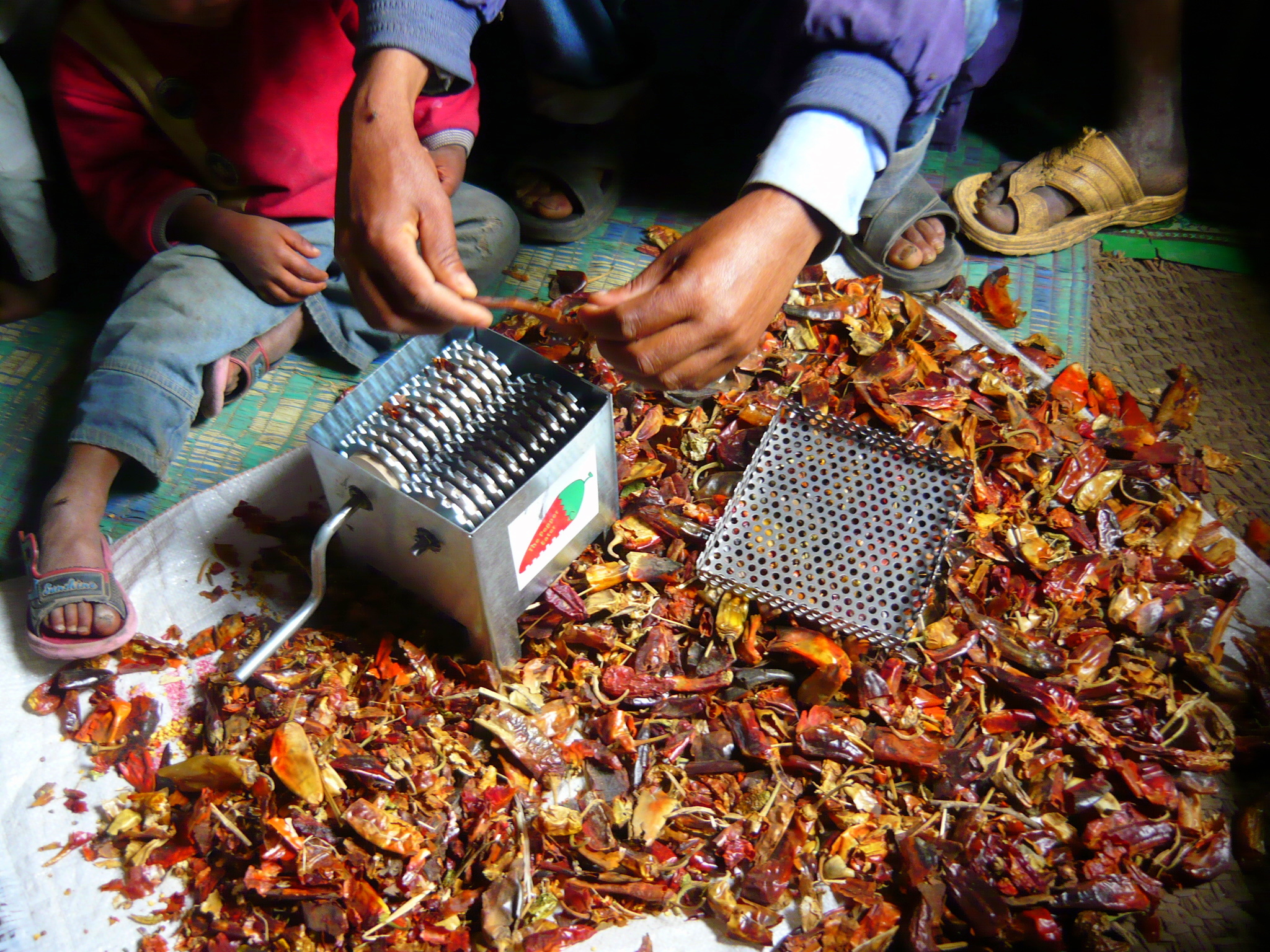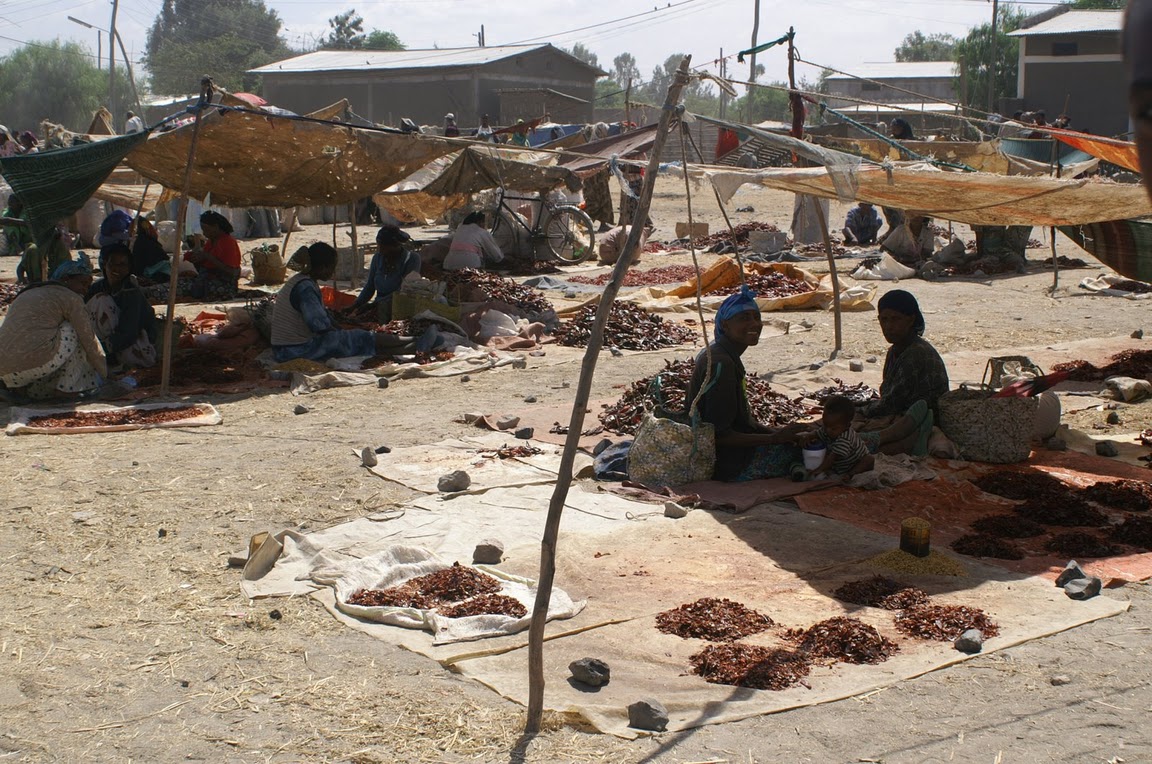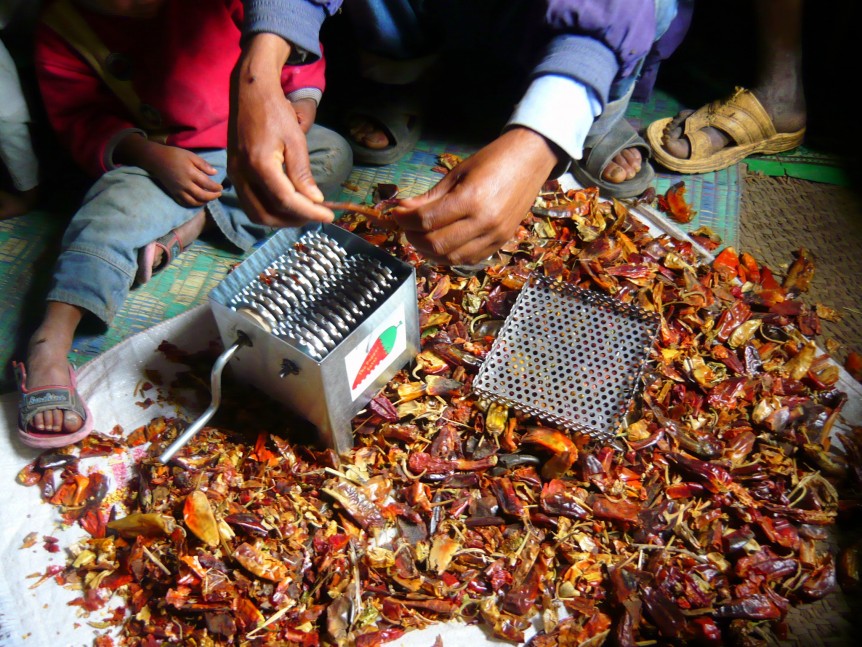 Sometimes it’s easy to forget that producing fiery foods is more than just a passion – in many parts of the world, chile production and processing is a necessity. Dried red pepper is the one of the most widely consumed spices in the world, eaten daily by one-quarter of the world’s population. Chile peppers are one of the oldest domesticated crops. Civilizations in South America grew chile peppers for food and medicinal purposes, and after peppers were introduced to other parts of the globe more than 500 years ago, chiles became important in developing nations for their economic value. Ethiopia alone consumes 466 million kilograms of pepper annually, with an estimated 400,000 women in Ethiopia processing peppers for income.
Sometimes it’s easy to forget that producing fiery foods is more than just a passion – in many parts of the world, chile production and processing is a necessity. Dried red pepper is the one of the most widely consumed spices in the world, eaten daily by one-quarter of the world’s population. Chile peppers are one of the oldest domesticated crops. Civilizations in South America grew chile peppers for food and medicinal purposes, and after peppers were introduced to other parts of the globe more than 500 years ago, chiles became important in developing nations for their economic value. Ethiopia alone consumes 466 million kilograms of pepper annually, with an estimated 400,000 women in Ethiopia processing peppers for income.
Inspired by stories of Ethiopian women bringing in income by processing peppers by hand, a team from the Hassno Plattner Design Institute at Stanford University developed the Pepper Eater—an affordable hand-cranked pepper grinder. Pepper processing is exhausting work that turns fresh peppers into higher-value products: dried flakes, seeds, and powder. The procedure can cause severe irritation in the skin, eyes, and noses from exposure to pepper oil containing capsaicin, pepper dust in the air can cause respiratory issues. The Pepper Eater produces dried pepper flakes about 2-4 times faster than current manual methods while greatly reducing the health risks associated with processing chiles.
The design team included Samuel Hamner, Megan Kerins, Siobhan Nolan, and Scott Sadlon, a group of Stanford Engineering and Business grad students. After successfully conducting an on-the-ground  feasibility study in September 2009, Sam and Scott are continuing as an independent design and strategy team with the goal of implementing the Pepper Eater in Ethiopia and other developing markets. Most recently, they have partnered with Compatible Technology International and have been featured in National Geographic Magazine to help them achieve their goal and gain exposure for the project.
feasibility study in September 2009, Sam and Scott are continuing as an independent design and strategy team with the goal of implementing the Pepper Eater in Ethiopia and other developing markets. Most recently, they have partnered with Compatible Technology International and have been featured in National Geographic Magazine to help them achieve their goal and gain exposure for the project.
Interested in learning more about the project, or donating? Visit: www.thepeppereater.org.
Sources & images for this article provided by:
http://socialelab.org/?page_id=103





